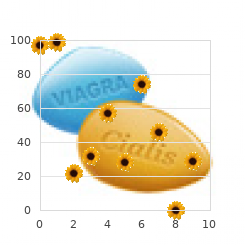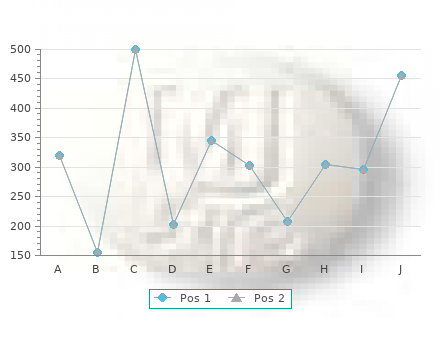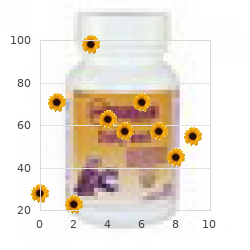Top Avana
By W. Ugrasal. Davidson College.
However discount 80mg top avana with amex erectile dysfunction treatment nhs, in the case of the heart cheap top avana 80mg fast delivery erectile dysfunction viagra dosage, it is not a microscopic layer but rather a macroscopic layer, consisting of a simple squamous epithelium called a mesothelium, reinforced with loose, irregular, or areolar connective tissue that attaches to the pericardium. This mesothelium secretes the lubricating serous fluid that fills the pericardial cavity and reduces friction as the heart contracts. Heart: Cardiac Tamponade If excess fluid builds within the pericardial space, it can lead to a condition called cardiac tamponade, or pericardial tamponade. With each contraction of the heart, more fluid—in most instances, blood—accumulates within the pericardial cavity. However, the excess fluid in the pericardial cavity puts pressure on the heart and prevents full relaxation, so the chambers within the heart contain slightly less blood as they begin each heart cycle. If the fluid builds up slowly, as in hypothyroidism, the pericardial cavity may be able to expand gradually to accommodate this extra volume. Premature removal of these drainage tubes, for example, following cardiac surgery, or clot formation within these tubes are causes of this condition. Surface Features of the Heart Inside the pericardium, the surface features of the heart are visible, including the four chambers. There is a superficial leaf- 830 Chapter 19 | The Cardiovascular System: The Heart like extension of the atria near the superior surface of the heart, one on each side, called an auricle—a name that means “ear like”—because its shape resembles the external ear of a human (Figure 19. Auricles are relatively thin-walled structures that can fill with blood and empty into the atria or upper chambers of the heart. Also prominent is a series of fat-filled grooves, each of which is known as a sulcus (plural = sulci), along the superior surfaces of the heart. Located between the left and right ventricles are two additional sulci that are not as deep as the coronary sulcus. The anterior interventricular sulcus is visible on the anterior surface of the heart, whereas the posterior interventricular sulcus is visible on the posterior surface of the heart. From superficial to deep, these are the epicardium, the myocardium, and the endocardium (see Figure 19. The outermost layer of the wall of the heart is also the innermost layer of the pericardium, the epicardium, or the visceral pericardium discussed earlier. It is built upon a framework of collagenous fibers, plus the blood vessels that supply the myocardium and the nerve fibers that help regulate the heart. It is the contraction of the myocardium that pumps blood through the heart and into the major arteries. The muscle pattern is elegant and complex, as the muscle cells swirl and spiral around the chambers of the heart. Deeper ventricular muscles also form a figure 8 around the two ventricles and proceed toward the apex. This complex swirling pattern allows the heart to pump blood more effectively than a simple linear pattern would. Although the ventricles on the right and left sides pump the same amount of blood per contraction, the muscle of the left ventricle is much thicker and better developed than that of the right ventricle. In order to overcome the high resistance required to pump blood into the long systemic circuit, the left ventricle must generate a great amount of pressure. The right ventricle does not need to generate as much pressure, since the pulmonary circuit is shorter and provides less resistance. Both ventricles pump the same amount of blood, but the left ventricle must generate a much greater pressure to overcome greater resistance in the systemic circuit. Note the differences in the relative size of the lumens, the region inside each ventricle where the blood is contained. The innermost layer of the heart wall, the endocardium, is joined to the myocardium with a thin layer of connective tissue. It is made of simple squamous epithelium called endothelium, which is continuous with the endothelial lining of the blood vessels (see Figure 19. Once regarded as a simple lining layer, recent evidence indicates that the endothelium of the endocardium and the coronary 832 Chapter 19 | The Cardiovascular System: The Heart capillaries may play active roles in regulating the contraction of the muscle within the myocardium. The endothelium may also regulate the growth patterns of the cardiac muscle cells throughout life, and the endothelins it secretes create an environment in the surrounding tissue fluids that regulates ionic concentrations and states of contractility.

Clinically buy top avana 80mg with visa erectile dysfunction icd 9 code 2013, Cushing syndrome is characterized by rapid weight gain generic 80 mg top avana otc erectile dysfunction treatment options injections, especially in the trunk and face region, depression, and anxiety. Patients with Cushing syndrome can exhibit high blood glucose levels and are at an increased risk of becoming obese. They also show slow growth, accumulation of fat between the shoulders, weak muscles, bone pain (because cortisol causes proteins to be broken down to make glucose via gluconeogenesis), and fatigue. Other symptoms include excessive sweating (hyperhidrosis), capillary dilation, and thinning of the skin, which can lead to easy bruising. Depending on the cause of the excess, treatment may be as simple as discontinuing the use of cortisol ointments. Where surgery is inappropriate, radiation therapy can be used to reduce the size of a tumor or ablate portions of the adrenal cortex. Adrenal insufficiency, or Addison’s disease, is characterized by the reduced production of cortisol from the adrenal gland. Patients with Addison’s disease may have low blood pressure, paleness, extreme weakness, fatigue, slow or sluggish movements, lightheadedness, and salt cravings due to the loss of sodium and high blood potassium levels (hyperkalemia). Victims also may suffer from loss of appetite, chronic diarrhea, vomiting, mouth lesions, and patchy skin color. Oxidation-Reduction Reactions The chemical reactions underlying metabolism involve the transfer of electrons from one compound to another by processes catalyzed by enzymes. The electrons in these reactions commonly come from hydrogen atoms, which consist of an electron + and a proton. A molecule gives up a hydrogen atom, in the form of a hydrogen ion (H ) and an electron, breaking the molecule into smaller parts. The loss of an electron, or oxidation, releases a small amount of energy; both the electron and the energy are then passed to another molecule in the process of reduction, or the gaining of an electron. These two reactions always happen together in an oxidation-reduction reaction (also called a redox reaction)—when an electron is passed between molecules, the donor is oxidized and the recipient is reduced. Oxidation-reduction reactions often happen in a series, so that a molecule that is reduced is subsequently oxidized, passing on not only the electron it just received but also the energy it received. Glucose and fructose are examples of simple sugars, and starch, glycogen, and cellulose are all examples of complex sugars. During digestion, carbohydrates are broken down into simple, soluble sugars that can be transported across the intestinal wall into the circulatory system to be transported throughout the body. Carbohydrate digestion begins in the mouth with the action of salivary amylase on starches and ends with monosaccharides being absorbed across the epithelium of the small intestine. Once the absorbed monosaccharides are transported to the tissues, the process of cellular respiration begins (Figure 24. After digestive processes break polysaccharides down into monosaccharides, including glucose, the monosaccharides are transported across the wall of the small intestine and into the circulatory system, which transports them to the liver. In the liver, hepatocytes either pass the glucose on through the circulatory system or store excess glucose as glycogen. This six-carbon sugar is split to form two phosphorylated three-carbon molecules, glyceraldehyde-3-phosphate and dihydroxyacetone phosphate, which are both converted into glyceraldehyde-3-phosphate. The glyceraldehyde-3-phosphate is further phosphorylated with groups donated by dihydrogen phosphate present in the cell to form the three-carbon molecule 1,3-bisphosphoglycerate. The energy of this reaction comes from the oxidation of (removal of electrons from) This OpenStax book is available for free at http://cnx. The energy for this endergonic reaction is provided by the removal (oxidation) of two electrons from each three-carbon compound. Glycolysis can be divided into two phases: energy consuming (also called chemical priming) and energy yielding. When glucose enters a cell, the enzyme hexokinase (or glucokinase, in the liver) rapidly adds a phosphate to convert it into glucose-6-phosphate. A kinase is a type of enzyme that adds a phosphate molecule to a substrate (in this case, glucose, but it can be true of other molecules also).

Fortunately we can prevent the emergence of drug resistance in virtually all cases if we take enough trouble to ensure that the best drug combinations are prescribed and that the patient takes them as directed buy top avana 80mg on-line muse erectile dysfunction wiki. It might be suggested that giving a risky combination of drugs 80 mg top avana free shipping what causes erectile dysfunction in 30s, or even giving a drug alone, will not matter if it is only for a short time. It is true that it may not matter in a number of patients, but in some it can matter very much and may make all the difference between survival and death. Te development of drug resistance may be a tragedy not only for the patient himself but for others. If physicians come to apply thoroughly the present knowledge about preventing drug resistance, this percentage should steadily diminish”. From Chemotherapy of pulmonary tuberculosis, by John Crofton, read to a plenary session at the Annual Meeting of the British Medical Associa- tion, Birmingham, England, 1958 (British Medical Journal, 1959, 5138(1):1610–1614). Dennis Falzon, Wayne van Gemert David Mercer, Dmitry Pashkevich, Valentin Rusovich, and Matteo Zignol managed data. Dennis Falzon, Roman Spataru, Gombogaram Tsogt and Richard Zal- Philippe Glaziou, Charalambos Sismanidis, Wayne van eskis. Philippe Glaziou Erwin Cooreman, Khurshid Alam Hyder and Nani and Charalambos Sismanidis led the revision of esti- Nair. De Arango, Robert del Aguila, Zeidy lae Moraru, Gulnora Murmusaeva, Zdenka Novakova, mata Azofeifa, Dràurio Barreira, Jaime Bravo, Christian Joan O’Donnell, Marie Claire Paty, Elena Pavlenko, Garcia Calavaro, Kenneth G. Castro, Espana Cedeno, Brankica Perovic, Vagan Rafaelovich Poghosyan, Cris- Felurimonde Chargles, Mercedez F Esteban Chiotti, tina Popa, Bozidarka Rakocevic, Filomena Rodrigues, Stefano Barbosa Codenotti, Ada S. Martinez Cruz, Xo- Elena Rodríguez-Valín, Karin Rønning, Kazimierz chil Alemàn de Cruz, Celia Martiney de Cuellar, Rich- Roszkowski, Petri Ruutu, Eugeniy Sagalchik, Saidulo ard D’Meza, Angela Diaz, Edward Ellis, Zulema Torres Makhmadalievich Saidaliev, Dmitri Sain, Roland Salm- Gaete, Victor Gallant, Manuel Zuniga Gajardo, E. Bontuyan Jr, Rich- bra, Ali Al-Lawati, Rashid Al-Owaish, Assan Al-Tuhami, ard Brostrom, Susan Bukon, En Hi Cho, Kuok Hei Chou, Abdullatif Alkhal, Saeed Alsaffar, Naima Ben Cheikh, Mao Tan Eang, Marites C. Fabul, Yasumasa Fukushima, Essam Elmoghazy, Mohamad Gaafar, Amal Galai, Anna Marie Celina G. Hashim, Ali Mohammed Heffernan, Nobukatsu Ishikawa, Andrew Kamarepa, Hussain, Lahsen Laasri, Fadia Maamari, Rachid Four- Seiya Kato, Dovdon Khandaasuren, Liza Lopez, Wang ati-Salah Ben Mansou, Issa Ali Al Rahbi, Khaled Abu Lixia, Tam Cheuk Ming, Dorj Otgontsetseg, Cheng Rumman, Mtanios Saade and Mohammed Tabena. Vianzon, Khin Mar Kyi Abubakar, Elmira Djusudbekovna Abdurakhmanova, Win and Byung Hee Yoo. Natavan Alikhanova, Aftandil Shermamatovich Al- Te authors also express their gratitude to Emmanuelle isherov, Odorina Tello Anchuela, Delphine Antoine, Dubout and Lydia Panchenko for their assistance with António Fonseca Antunes, Coll Armanguè, Gordana data management, and Sue Hobbs of minimum graph- Radosavljevic Asic, Margarida Rusudan Aspindze- ics for providing design and layout of the report. Teir lashvili, Andrei Petrovich Astrovko, Venera Bismilda, contributions have been greatly appreciated. We are sincerely " Istituto Superiore di Sanità Dipartimento di Malat- grateful for their support. Tey may have different meanings in the proportion of drug resistance among a sample of other contexts. Te clustering effect is the extent to which documentation is available, there is evidence of such inferences, properly accounting for this clustering history. Territory A legally administered territory, which is a non-sovereign geographical area that has come un- der the authority of another government. It summarizes the bacteria or may develop in the course of a patient’s latest data and provides latest estimates of the global treatment. To date, 12 countries gion (China), Estonia, Latvia, Lithuania and the United States of America. Te funding required in 2015 will be 16 finding concurs with the results contained in “Anti-tu- times higher than the funding that is available in 2010. To settings, diagnostic capacity cannot match the current date, a cumulative total of 58 countries have confirmed needs. Treatment success was lished for 2015 – the diagnosis and treatment of 80% of documented in 60% of patients overall. Anti-Tuberculosis Drug Resistance Surveillance, data Te Supranational Reference Laboratory Network1 on drug resistance have been systematically collected expanded to include three additional laboratories in and analysed from 114 countries worldwide (59% of all 2007–2009 and now comprises 28 laboratories world- countries of the world). Compared with lines: Bangladesh, Belarus, Kyrgyzstan, Pakistan and the 4th report on anti-tuberculosis drug resistance Nigeria. Updated data on trends are available Of 114 countries that provided information between from 37 countries. Te Russian B continuous surveillance data and was therefore not Federation reported both Class A and Class B subna- included in Map 4. Tese high propor- countries that have conducted continuous surveillance tions explain in part the slow progress made in Eastern since the time of publication of the 4th report on anti- European and Central Asian countries in reaching the tuberculosis drug resistance in 2008 (6).
The network has completed 13 rounds of proficiency testing since 1994 buy top avana 80 mg online herbal erectile dysfunction pills uk; and cumulative results indicate an overall high performance cheap top avana 80mg otc erectile dysfunction treatment san francisco. Although overall performance of the network is good, annually, one or two laboratories within the network will show suboptimal performance. This indicates the difficulty of executing high-quality drug-susceptibility testing year after year, and also highlights the importance of internal quality assurance. Results are determined judicially, and through the course of 13 rounds of proficiency testing, “borderline” strains have been encountered, where up to half the network has found these strains to be susceptible and the other laboratories have found them to be resistant. Since round 9, thorough pretesting has been used to exclude such strains from panels, but has not always been successful. Therefore, strains with less than 80% concordance within the network have been excluded from overall performance measures, so that judicial results are not distorted. Over a five-year period, 40 of 600 strains, or approximately 7% of strains included in annual panels, have been excluded. The study on borderline strains has been useful in confirming that the most important factor explaining the variation of the results of panel testing is strain selection. Currently, there is no established gold standard to replace the judicial 80 system. One possible solution would be a definition of “intermediary” resistant results; however, this would require testing at two concentrations. Many high- income countries will test drugs (at least isoniazid) at two concentrations. To date, no study has systematically evaluated all available methods for testing, established critical concentrations for all available second-line drugs, or evaluated a large number of clinical isolates for microbiological and clinical end-points. In July 2007, guidance was developed for the selection of and testing for second-line drugs. Based on evidence or expert consensus (where no evidence was available), a hierarchy was developed recommending drug-susceptibility testing based on both clinical relevance and reliability of the test available. Rifampicin and isoniazid were prioritized, followed by ethambutol, streptomycin and pyrazinamide, and then the second-line injectables (amikacin, kanamycin and capreomycin) and fluroquinolones. The policy guidance is available, and full technical guidelines for the drug-susceptibility testing of second-line drugs became available in 2008. Tests for rapid identification of second-line drug resistance are not yet available. The variation in resistance among countries within the region is relatively narrow; however, roughly half of the data points used to look at the distribution are at least five years old. Only Botswana, Côte d’Ivoire, Sierra Leone and Mpumalanga Province, South Africa, have carried out repeat surveys. Detection of this outbreak was only possible because of the extensive laboratory infrastructure available in the country. It is likely that similar outbreaks of drug resistance with associated high mortality are taking place in other countries, but are not being detected due to insufficient laboratory capacity. Botswana, Mauritania and Mozambique have nationwide surveys under way, and Angola, Burundi, Lesotho, Malawi, Namibia, South Africa, Uganda and Zambia have plans to initiate nationwide surveys over the next year. Nigeria and the Congo plan to begin a survey covering selected districts in their respective countries in 2008. Currently, Botswana and Swaziland are surveying high-risk populations to examine the extent of first and second-line drug resistance; results should be available in early 2008. Malawi, Mozambique, Zambia and Zimbabwe all have plans to conduct similar studies. South Africa has recently conducted a review of the country’s laboratory database and found that 996 (5. Selection and testing practices varied across the country and with time; however, all isolates correspond to individual cases29. Data from this project will be available in early 2008 and, if shown to be comparable with phenotypic testing, may be a useful tool in the expansion of survey coverage in the region as well as in trend analysis. The most critical factor in addressing drug resistance in African countries is the lack of laboratory infrastructure and transport networks that can provide rapid diagnosis.

Top Avana
8 of 10 - Review by W. Ugrasal
Votes: 110 votes
Total customer reviews: 110
|



